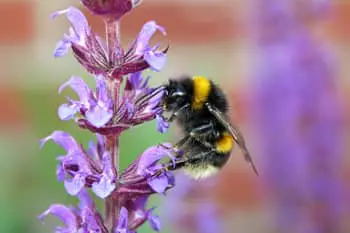
Everyone knows the importance of pollinators when growing fruits and veggies, that being said It’s still surprising to see how little care is given to the bees, hummingbirds, and butterflies, which do all this work. Let’s first take a closer look at why pollinators are a very important part of vegetable gardening, how to improve your garden and make it more pollinator-friendly and a couple of helpful tips to keep in mind regarding these small buzzy helpers.
If you’re here for the quick answer to the question: How to attract bees to your garden? Make sure to offer a good and safe environment for bees, including a source of water, shelter, a lot of different nectar-rich flowers (it’s best to have something blooming at all times of the year), and avoid the usage of pesticides.
Next, let’s take a closer look at all these steps but first I want to spend some time discussing the importance of our pollinating friends.
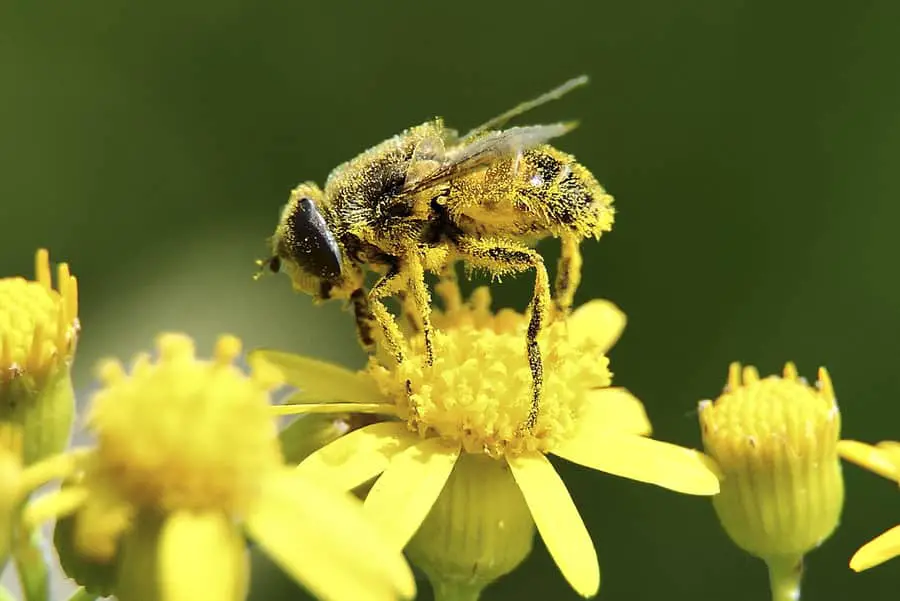
Why are Bees and other pollinators so important
Pollinators live in a symbiotic relationship with flowering plants, nectar is collected for a couple of reasons but mainly as an energy source (it consists primarily of sugar). Pollen, on the other hand, consists of more fat and protein, being the main (or only) source of protein for Bees. Without enough Pollen young bees wouldn’t be able to survive and the colony would die within a couple of generations.
While collecting Pollen from multiple flowers Bees (and all other pollinators) will also carry the pollen from one flower to another causing cross-pollination. This is an important step for the plants’ seed and fruit production, making Bees an essential part of every ecosystem.
Pollinators are so important because of their role in the productivity of plants on a basic level, without bees the foundation of plant production will crumble and we won’t be able to produce most of our everyday products including livestock. With all that out of the way, let’s take a look at the most common Pollinators.
What are the most common Pollinators

Honeybees are the most well-known of all pollinators, and that’s for a reason, none of the others can hold a candle to this busy worker. Special hair around the Honeybees body will trap pollen, making them very efficient pollinators. They prefer flowers of purple, blue, yellow and white color, otherwise being relatively lenient in their flower choice. Nightshades are one exception, bees are not well-adapted to harvest pollen from tomatoes.

Bumblebees are another well-known pollinator, mostly known for its famously unexplained flight-ability (more to this later). This fuzzy “Flying Panda” has a very unique technique called buzz pollination constant fast flapping of their winds (130 times per second) plus their large body causes flowers to vibrate and release more pollen. They are also capable of pollinating nightshades like tomatoes or eggplants because of this method.
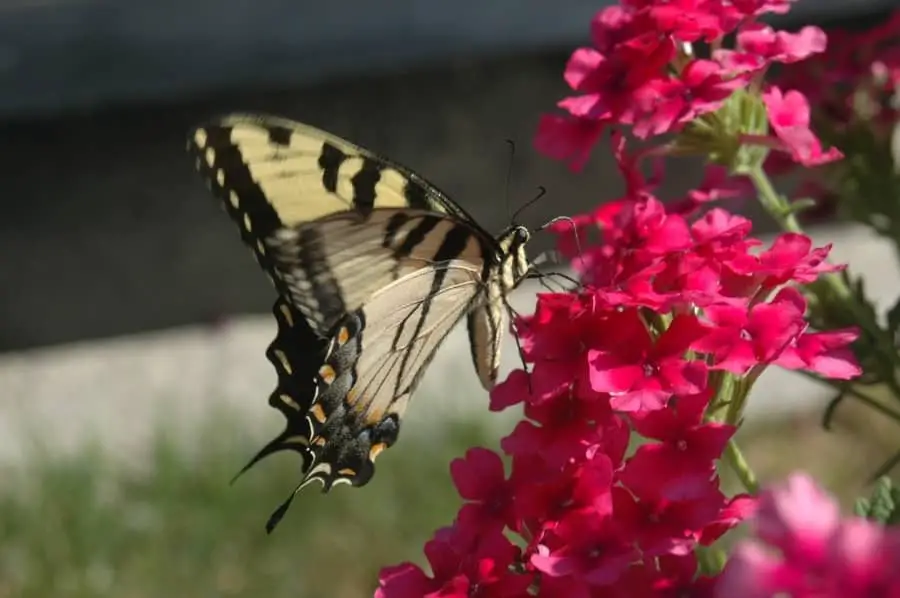
Moths and Butterflies, also indirectly help to pollinate flowers, unlike bees they do not actively collect pollen, but instead transfer them passively while collecting nectar. Due to their long legs, they tend to pick up very little pollen mostly from flowers which offer a landing pad. Unlike Bees, Butterflies are able to see red and travel larger distances between each landing helping to improve genetic diversity.
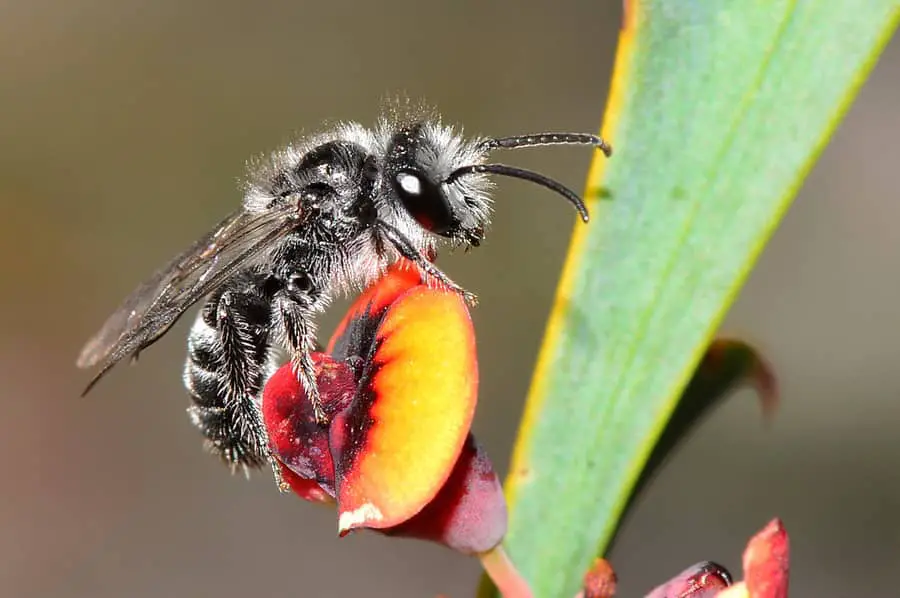
Wild Bees, besides the domesticated Honeybees wild Bees also play a huge role in pollination. Mostly over-shadowed by their domesticated cousin, wild Bees often live a solitary lifestyle, only taking for their young and not living in a hive structure. Wild Bees are fantastic pollinators, often far more effective then Honeybees, they are however less common and therefore contribute a smaller total amount to pollination.

Hummingbird, this small bird also plays a role in pollination. There are actually a couple of ways they transfer pollen, most notably Bill transfer (pollen stick to the bill of the hummingbird, while they travel between flowers). Some flowers are adapted to hummingbirds and will cover their heads with pollen when they try to reach the nectar deep within long tubular flowers.
Next step, how to actually do you get all these pollinators into your garden?
7 ways to attract more pollinators

Provide Shelter: it’s really important to give your little helpers a place to take cover. They need a place to hide from predators, that is protected from both sun and wind to cool down from time to time. You can create a nice little Bee-hangout, but letting a part of your garden to grow without interfering, growing ground covering plants or hanging up an insect Hotel.
All these are viable options to make your garden more Bee friendly, and will, in turn, will improve pollination in your garden. Providing a nest for solitary Bees will also keep them close to your garden, making them your very own small pollination workers.
Provide Water: another often overlooked factor for attracting more bees is water. Adding a birdbath or a small catch basin into your garden will give pollinators the opportunity to drink directly at your garden, and not having to fly to the nearest water source. Water alone can also attract a lot of different small critters, especially when it’s dry.
Another good thing to know: Bees don’t like wet feet, providing a floating platform in your water source will do them a big favor, you can simply a couple of wine corks, stones or twigs to your water for them to land on and take a sip.
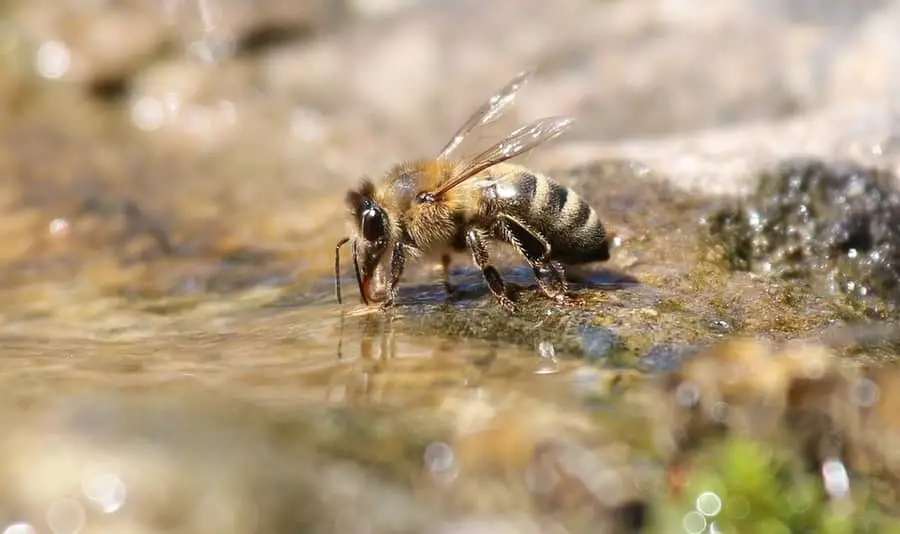
Avoid Pesticides: Pesticides are there to keep away anything that will eat up your crops, but sadly it will also kill anything else, it comes in contact with. Reducing or eliminating Pesticide use can help to have more Bees around, growing your vegetables completely poison-free is quite a challenge but using natural pest control, like certain herbs, ladybugs, and crop rotation will help to reduce the damage done to your crops.
Make it colorful: Having a wide variety of flowers in your garden will make it more attractive to all sorts of pollinators. Keep in mind Bees are not able to see red and prefer blue, yellow and purple. However, if you plant a lot of different Flowers in all shapes, colors and sizes a lot of different Pollinators will find their way into your garden. Later I will also provide some suggestions on what you can grow to make your garden more attractive.
Have flowers all year’ round: This is another often overlooked factor in many gardens. Keep in mind Bees rely on flowers to feed and survive, provide a nice banquet for a couple of weeks in itself is great for them, but once they start to wilt all the Pollinators will look for another place to feed. To make them more interested in your garden all year round plant in succession and a lot of different flowers blooming multiple weeks apart.
Once your garden is established as a great source of food at all times, a lot of Pollinators will stay close to it.

Plant pollen-rich flowers: Doing your Bees a favor by planting pollen-rich and easy to reach flowers will also increase the popularity of your garden. In general, singe-petal flowers are much faster to reach and provide an easier food source for Pollinators. Another great addition are flowers native to your area, Bees will know them best and actually prefer them over some exotic flower.
Grow in a sunny sheltered location: Bees love the sun and hate wind so growing your flowers keeping these two conditions in mind will make your garden even more attractive than it already is. Naturally, not all gardens have a sheltered sunny place, but if you’re lucky enough to have one, why not use it and grow a nice patch of flowers to attract a lot of buzzy friends.
List of plants that attract pollinators
Now we know lots of ways to attract bees to your garden, and a lot has to do with flowers, so which plants should you pick if you want to give your Pollinators a good time?

Vegetables: Most vegetables commonly grown will produce flowers, some are more attractive to Bees than others, but overall you can’t go wrong with adding some Zucchini, Legumes, Cucumbers, Pumpkins or tomatoes. Herbs are also perfect to attract Pollinators, growing Basil, Sage, Borage, Oregano, Chives or Thyme are just some possibilities, remember to let them flower so the bees actually can have the chance to collect some pollen.

Fruit: flowering fruits are another great and easy way to attract bees and get something out of it, fruits like strawberries, blackberries, melons, apples, and stone fruits in general (-peaches, nectarines, plums) can both benefit you and all the bees in your area.

Flowers/Shrubs: Now let’s have a look at the most important plant when you want to attract pollinators into your garden. Flowers do by far the best job at attracting any kind of bees, but which ones work best? Picking flowers or Shrubs native to your area will help to build an even more attractive garden for bees.
- Bee balm
- Asters
- Sunflower
- Wisteria
- Black-eyed Susans
- Gaillardia
- Honeysuckle
- Geranium
- Butterfly weed
- Poppies
- Lilies
- Porterweed
- Alyssum
- Goldenrod
- Clovers
- Dandelion
- Snowdrops
- Rhododendron
- Coneflower
- Rabbit-brush
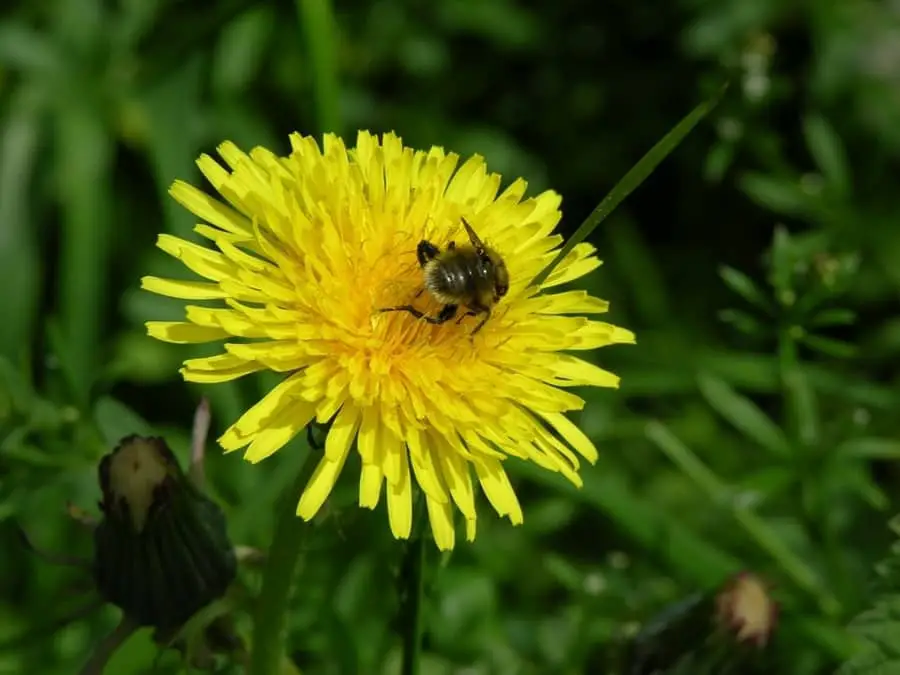
How to have blooms all year’ round
There are multiple ways to keep your garden interesting for Pollinators all-year round, by far the easiest way is to grow specific combinations of flowers, to always have something blooming. Just choose a good combination of these flowers and you’ll find Bees will stay in your garden at any time.
Spring: Bloodroot, Lilac, Crocus, Daffodil, Winter Aconite, Oakleaf Hydrangea
Summer: Gaillardia, Coreopsis, Yarrow, Purple coneflower, Aster, Catmint, Bee balm, Garden Cosmos
Autumn: Japanese anemone, Butterfly bush, Stonecrop, Coreopsis (‘Autumn Blush’), Rabbit-brush
These are just some examples to choose from, of course, you can simply add any other flower you like to the mix, it’s important to plant at least a block of 2 different flowers for each season.
Thanks for reading all the way through, if you have any favorite bee-loved flower feel free to share it below I’d be very happy to hear what works best for you!
Related Questions
Which smells are bees most attracted to? First off, yes Bees actually have the ability to smell. Naturally they really like sweet-smelling blooms (Phlox, Jasmine, Honeysuckle) as well as scented herbs (Rosemary, Borage, Lavender).
